Lights, Camera, Acoustics! Film Studio Acoustic Design with Barry Jobling of Hoare Lea


Lights, Camera, Acoustics! Film Studio Acoustic Design with Barry Jobling of Hoare Lea
Image (article header): Dagenham Studios is just one of the many Film Studio projects that Hoare Lea is currently working on.
Film and TV production is the fastest growing sector in the UK economy. The past eighteen months especially have seen a decrease in cinema ticket sales and an increase in demand for streaming services, sparked by the pandemic’s multiple effects on our lifestyle and consumption of visual and acoustic art.
To add to the picture, there is a race to build world leading Film Studios across the UK. Dagenham Council struck a £300 million deal in November 2020 which commenced the construction of a studio expected to welcome its first productions as soon as mid 2022. Liverpool city council has submitted a planning application to create the city’s first “pop-up” TV and film stages, which will sit alongside a much bigger development of the city’s historic Littlewoods Building, a 10-acre (four hectare) site dubbed the “Hollywood of the north” that will open in 2023.
Hoare Lea, a TETRA TECH company based in the UK-based, has only seen more business since this boom. The multi-disciplinary engineering consultancy firm describes itself as engineers of human experience, stating on its website; “we are problem solvers who care about how a space makes you feel when you step inside...who bring buildings to life”. Having worked on the likes of Dagenham Studios, Sky Studios Elstree and Space Studios Manchester, the firm continues its 160 year legacy of conscientious evolution to this day.
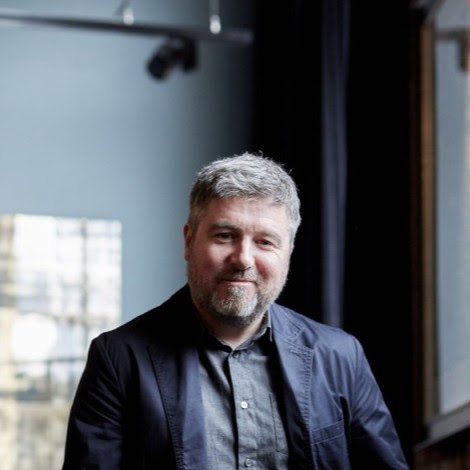
Hoare Lea Director, Barry Jobling - our guest on Ep. 29 of The Quiet Mark Podcast - LIGHTS, CAMERA, ACOUSTICS! - recently spoke about this legacy via Hoare Lea’s passion to find sustainable solutions when building film studios and other architecture for entertainment purposes.
Having recently been appointed as one of the advisors to the British Film Commission, Hoare Lea contributed to a new report called JLL: Reel Estate – Film and TV Studios as an Investment. It found that there is approximately 3.4m sq ft of permanent stage space and somewhere in the region of 1.8-2m sq ft of temporary stage space in play. Looking ahead, there currently is 920,000 sq ft of further permanent stage space committed to be built by 2024, and a potential further development pipeline of 3.6m sq ft under consideration.
Barry spoke to us about Hoare Lea’s work on the sound stages at the Sky Studios in Elstree, some of which are 30,000 square feet and almost 50 feet high. “As you would expect they are extremely quiet with an NR (Noise Rating) of 20 or 25. To give context, when commissioning Warner Bros. Studios, Leavesden, there was someone standing 50 metres away playing with the keys in their pockets and I had to tell them to leave - it was that quiet!”
In the same way George Martin, producer of the Beatles, would describe the walls of Abbey Road as a fifth member of the band, Podcast Host, Simon Gosling asked Barry whether a film director would similarly choose a studio for sound reasons or if visual aesthetics and space would be the only criteria. “From a sound point of view, we are exploring with the people that really have control of the sound environment. We speak with those industry experts who tell us what they like - the pros and the cons - and hope we can translate the solutions into the design. Sound studios are incredibly dead spaces with the walls, ceiling and roof covered in high performance absorption materials to keep outside noise out.”
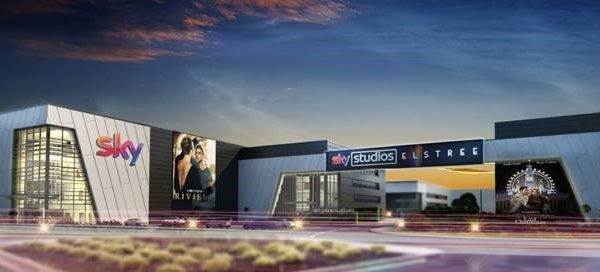
Image: Sky Studios’ Elstree - a 32-acre TV and film studio that will allow more high quality, original content to be created.
Barry also informed us that a common challenge has been with the demand to build very quickly. While he and his team of acoustic consultants want to deliver efficiency, Barry expressed a keen interest in finding sustainable solutions to traditional studio materials such as concrete which have a poor carbon impact. “Since our work in Leavesden, we have tried to look at alternative approaches and that has allowed us to come up with solutions that meet the demands of cost and time pressure.”
During our ‘Sustainable September’ month here at Quiet Mark, we spoke with various manufactures of Quiet Mark certified products, listed on our Acoustics Academy, about their certifications of sustainability and the growth in Specifiers who were increasingly looking for sustainability produced products.
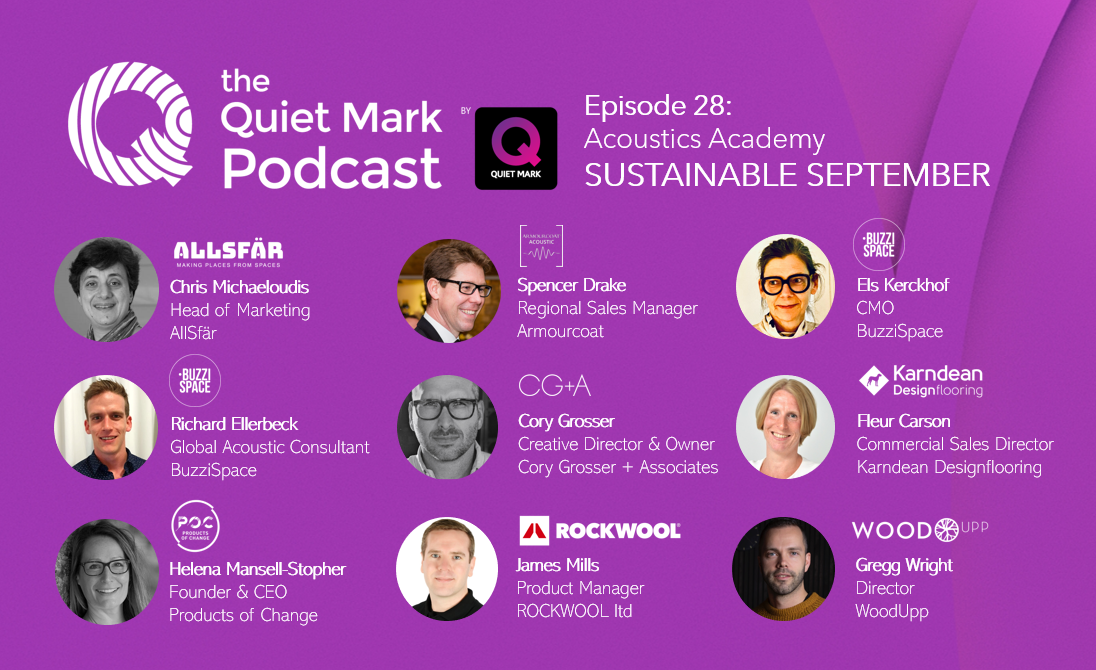
Listen to SUSTAINABLE SEPTEMBER on The Quiet Mark Podcast
Barry related this occurrence to the government’s recent setting of challenges as part of the industrial strategy. “Clean growth is the one area we can feed into. As acoustic designers we have an influential role in specifying and designing materials and products that can improve and limit the damage and impact. The right thing for us to do, as consultants, is look for alternatives to reduce the embodied carbon in the buildings we are constructing and designing. That is something acoustic consultants collectively have an opportunity to change as we go forward”.
“I think we will see a move to carry out carbon assessments in all buildings which will drive us towards improved product selections and move us away from carbon intensive products like steel and concrete. From an acoustic point of view, we really play a part and we can achieve the same performance as concrete but from lighter materials such as (Quiet Mark certified) ROCKWOOL insulation. There are different solutions and we need to be brave as acoustic designers and consultants guiding on acoustic performance and the carbon intensity of products.”
“Quiet Mark does a great job at driving us towards quieter products but we need to collectively go beyond that and think about the sustainability of materials and products we are specifying - in film studios and elsewhere - and that's where acoustic consultants can have a major influence in tackling climate change”.
We also covered the increasing use of oralisation techniques which are enhancing the client to acoustician relationship as the technique enables clients to hear spaces before they’re even built. Barry reminds us that acousticians have been building demonstration tools for the last fifteen years and that they make numbers “feel real to the client”. The technique is replacing the traditional 30-page long document filled with numbers and charts with an interactive ten minute demonstration which paints a more tangible and comprehensive picture.
“As an acoustic community we need to work at converting what is often confused as a dark art into something tangible and easy for people to get to grips with. Ultimately, what we want is to be heard and to make a difference and to work acoustic improvements into the buildings we are designing.”
Film Studios are listed under the Arts & Entertainment building type of our Acoustics Academy. Launched last year, our Acoustics Academy is a brand-new online platform designed to further equip and empower architects, builders and designers with a guide to expertly verified leading acoustic solutions for every building application area.
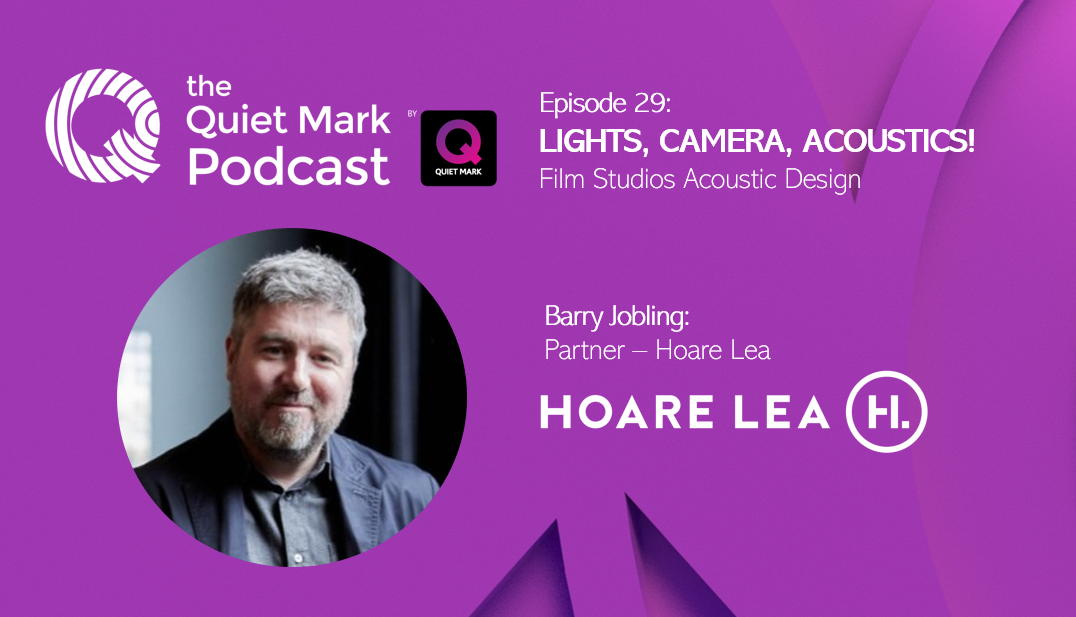 Listen to Barry Jobling - Partner - Hoare Lea on The Quiet Mark Podcast
Listen to Barry Jobling - Partner - Hoare Lea on The Quiet Mark Podcast
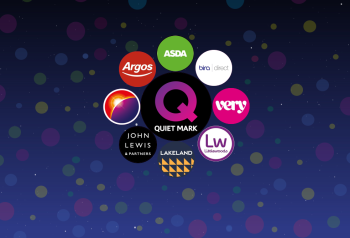
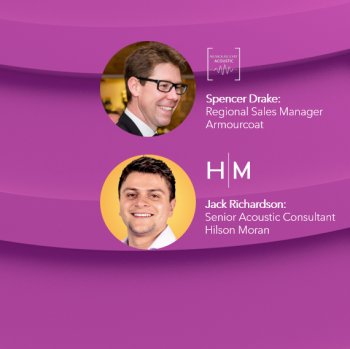
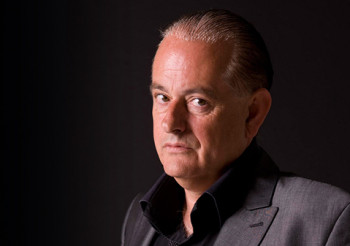

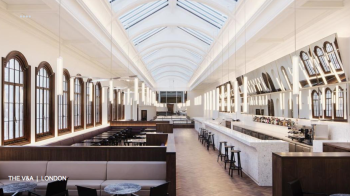



 Quiet Mark Founder
Quiet Mark Founder